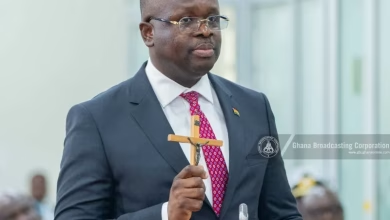PURC and GWCL Raise Alarm Over Encroachment Threatening Kpeve Water Supply

- Private development threatens Kpeve water supply
- Private development threatens Kpeve water supply
- GWCL demands action to protect Kpeve plant
The Public Utilities Regulatory Commission (PURC) and Ghana Water Company Limited (GWCL) have expressed serious concerns over private developments encroaching on the buffer zone of the Kpeve Treatment Plant. The developments pose a potential threat to water supply and infrastructure in the region, especially the dam at the intake point.
A team involved in an outreach programme recently uncovered some unauthorized developments within the buffer zone of the headworks. These activities are seen as a significant risk to the environment, with the potential to cause severe damage to the dam at the intake point if not addressed.
The developments exacerbate existing challenges at the Kpeve Treatment Plant, including the frequent breakdown of the only remaining pumping machine, which is the last of the three originally installed at the headworks in 1993. The malfunctioning equipment has already deprived Ho and surrounding areas of essential water resources. Any further destruction of the intake point would have catastrophic consequences, threatening the delivery of water services to a large customer base.
The private developer in question, BSK City, is said to own part of the land, including the buffer zone. The company has reportedly conducted grading activities on the hill by the intake, filling part of the intake with removed topsoil from the hill.
In response to the environmental impact, Francis Lamptey, the Volta Regional Chief Manager of GWCL, spoke to the Ghana News Agency (GNA), stating that the immediate consequence of the developer’s actions is a reduction in the water volume at the intake.
He explained that the lack of vegetative cover on the bare soil would lead to increased runoff during rainfall, which in turn would cause significant siltation at the intake. This would elevate turbidity levels beyond treatable limits. “When this happens, the Treatment Plant will have to shut down as it is not equipped with a coagulant dosing system, clarifiers, or sedimentation tanks to treat highly turbid water,” Lamptey stated.
Lamptey further warned that any development—whether for resort purposes or human settlement—near the intake could result in pollution, as waste from these areas could be discharged directly into the intake, causing severe environmental and operational consequences.
The GWCL has formally requested that both the National and Regional Security Councils intervene to prohibit further harmful activities by the private developer. The company is also asking that the developer be compelled to plant grass to cover the graded areas and prevent siltation and turbidity caused by rainfall runoff.
GWCL has notified several stakeholders, including the Environmental Protection Agency (EPA), the Water Resources Commission, the Regional House of Chiefs, and the South Dayi Assembly, about the issue.
The discovery of these developments was made during a visit on January 21, 2025, by officials from the Public Utilities Regulatory Commission (PURC) to discuss water supply challenges in Ho. As part of their fact-finding mission, the PURC team visited the Kpeve Treatment Plant and identified the activities of the private developer.
Attempts by the GNA to contact the CEO of BSK City for clarification on the issue have been unsuccessful, as phone calls and text messages remain unanswered.






